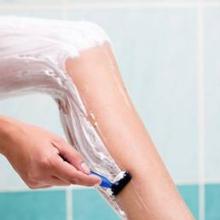DANA POINT, CALIF. – An at-home, consumer hot-wire hair removal device worked no better than did standard shaving, according to a recent study.
"Relative to shaving, treatment with the hot-wire device did not produce statistically significant differences in the percentage change from baseline in hair count, duration of hair removal effect, or color and/or thickness of regrowing hair," Dr. Brian S. Biesman said.
There have been no controlled published studies of the no!no! hair removal device (manufactured by Radiancy) in peer-reviewed literature, which led Dr. Biesman to conduct a small study comparing the device’s efficacy with that of standard shaving.
According to information on the no!no! website, the device uses Thermicon technology "to conduct a gentle pulse of heat to the hair," which "instantly removes hair and slows the rate of hair regrowth with no pain." In Dr. Biesman’s study, however, the effectiveness of the hot-wire device, used according to the manufacturer’s recommendations (four passes per session), was found to be equivalent to standard shaving for all study end points.
For instance, active hair follicles and hair regrowth were not affected by a series of treatments with the hair removal device, compared with shaving. Also, hair thickness and color did not change after treatment with the device, Dr. Biesman reported in a poster at the Summit in Aesthetic Medicine sponsored by Skin Disease Education Foundation (SDEF).
A total of 23 patients (7 men, 16 women) aged 18-55 years completed the study; 90% of participants were white. Two sites on one leg of each patient were shaved 4 days before baseline, and then were treated every 3-4 days with the hot-wire device on one site on the leg and by shaving the other site for 8 weeks. The treatment sites were two symmetric 3 × 3 cm areas of the leg that were 3 cm apart and contained at least 15 hairs. The corners of the sites were micro-tattooed with ink, which was visible under black light.
Photographs were taken to measure hair count at baseline, weekly during treatment (before and after), at 4 days following final treatment, and at each follow-up visit (4, 8, and 12 weeks after final treatment), and "blinded visual and digital assessments were made for hair thickness and color," noted Dr. Biesman, who has a private practice in Nashville, Tenn.
The mean baseline hair count of the hot-wire and shaving sites were 86 and 79, respectively, "which remained stable during the 8-week treatment phase. No hair count reduction was seen." At post-treatment follow up, hair counts increased to 95 (treatment site) and 84 (shaving site) at 4 days, 104 and 99 at 1 month, 106 and 100 at 2 months, and 109 and 105 at 3 months. Hair regrowth was noted immediately after ceasing treatment with the hot-wire device.
The mean percent change at 4 days post treatment was 19% with the hot-wire device, compared with 14% with shaving; 41% and 41% at 1 month post treatment; 31% and 28% at 2 months post treatment; and 32% and 37% at 3 months.
A study limitation was that hair removal was evaluated only on the lower leg to sites not randomly assigned.
The study was sponsored by Tria Beauty, for which Dr. Biesman has consulted and from which he has received research support. SDEF and this news organization are owned by Elsevier.


